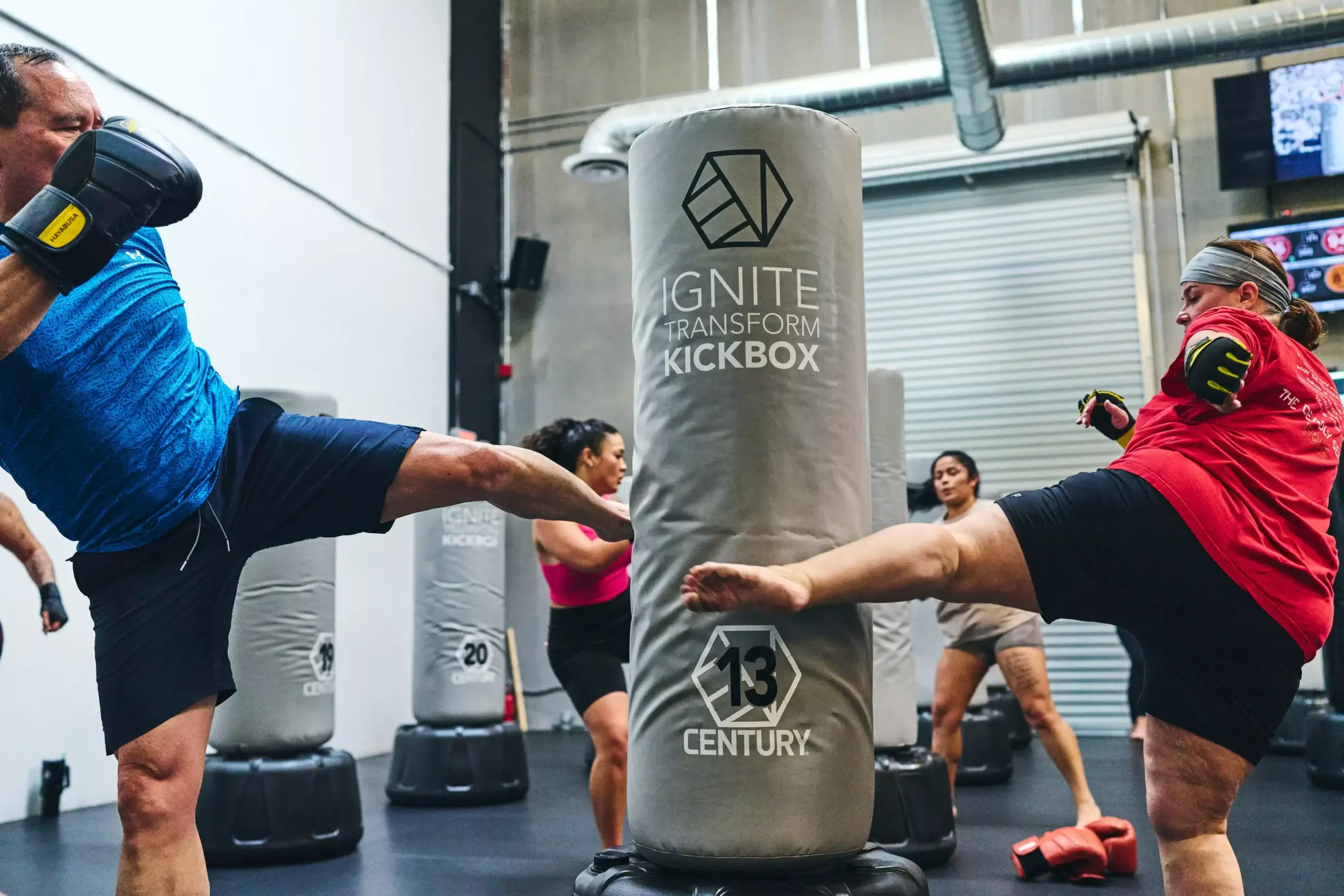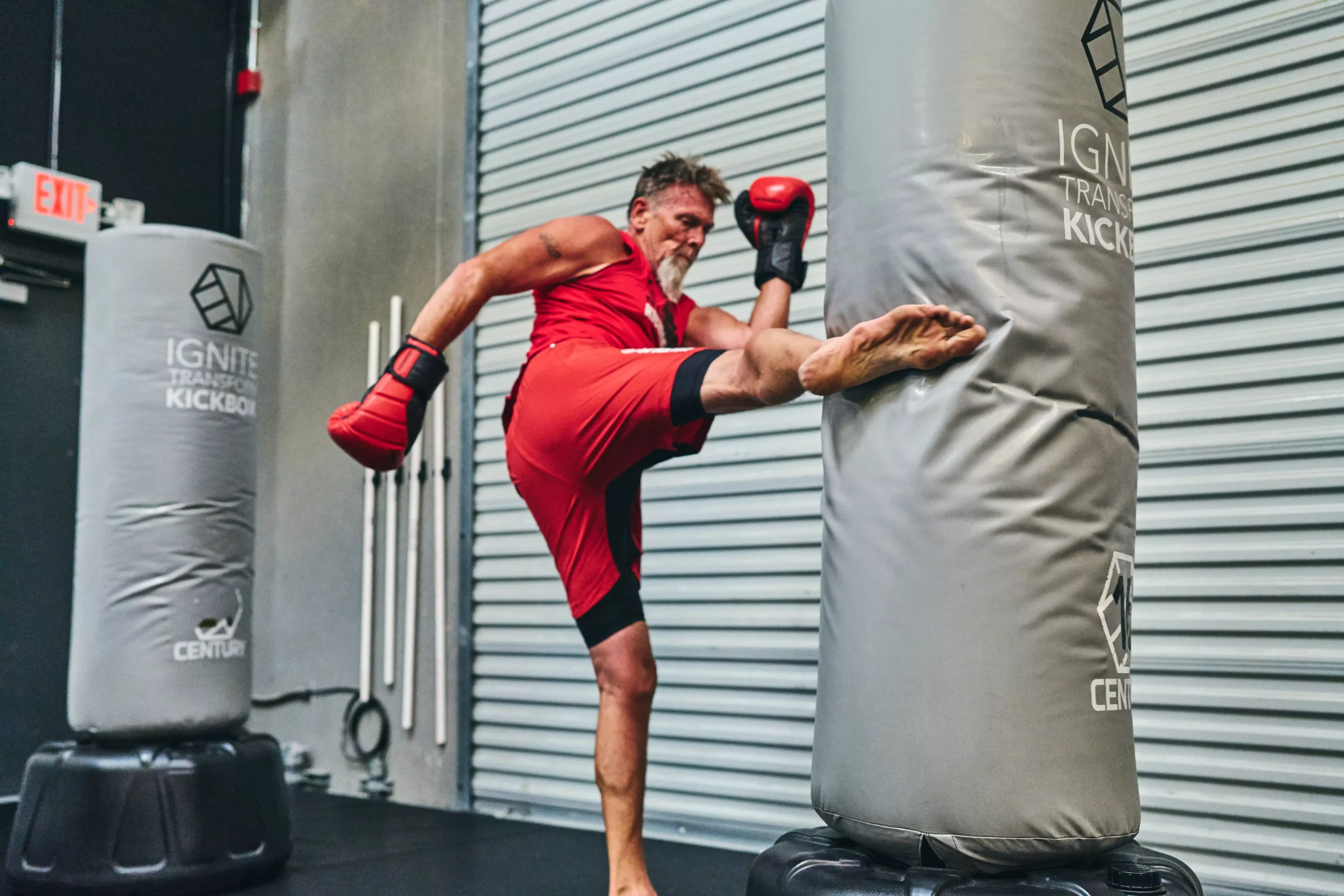
Mastering Kick Boxing Moves: Essential Techniques to Elevate Your Game
Kickboxing is not just about throwing punches and kicks; it’s a blend of strategy, skill, and physical conditioning. Whether you’re a beginner or looking to sharpen your techniques, mastering kickboxing moves is essential for improving your performance in the ring. This article breaks down the key techniques and strategies that can help you take your kickboxing game to the next level.
Fundamental Kick Boxing Moves
Understanding Basic Kicks
Okay, so you wanna learn kickboxing? First, you gotta get the basics down. We’re talking about the core kicks that everything else builds on. Think of it like learning the alphabet before you write a novel. You’ve got your front kick, your roundhouse, and your side kick. These aren’t just random movements; they’re the foundation. Each kick has a specific purpose and range, and mastering them is key to developing a solid base.
- Front Kick: Good for keeping distance and quick jabs.
- Roundhouse Kick: Delivers power and can target different body parts.
- Side Kick: Useful for creating space and delivering strong blows.
It’s easy to get caught up in wanting to learn the fancy stuff right away, but trust me, spending the time to really understand and perfect these basic kicks will pay off big time in the long run. It’s all about building a strong foundation.
Importance of Stance and Footwork
Stance and footwork? Super important. It’s not just about standing there and throwing kicks. It’s about how you move, how you position yourself, and how you maintain your balance. A good stance gives you power, stability, and the ability to move quickly. Footwork lets you control the distance, create angles, and evade attacks. Think of it as dancing, but with punches and kicks. If your footwork is bad, you’re gonna have a bad time.
- Balance: Maintain a low center of gravity for stability.
- Movement: Practice moving in all directions without losing balance.
- Positioning: Learn to angle your body for offense and defense.
Key Defensive Techniques
Alright, so you can throw a punch and kick, great. But what happens when someone throws one at you? That’s where defense comes in. Blocking, parrying, slipping – these are your bread and butter. Learning to defend yourself is just as important as learning to attack. You need to be able to protect yourself, avoid getting hit, and create openings for your own attacks. Don’t be that person who only knows how to throw punches and gets knocked out in the first round.
- Blocking: Use your arms and legs to deflect incoming strikes.
- Parrying: Redirect punches away from your body.
- Slipping: Move your head to avoid punches completely.
Advanced Kicking Techniques
Okay, so you’ve got the basics down. Now it’s time to really start having some fun and add some serious power to your kickboxing game. We’re talking about the kicks that can really change the course of a fight. These aren’t just your everyday jabs; they require practice, precision, and a good understanding of body mechanics. Let’s get into it.
Mastering the Roundhouse Kick
The roundhouse kick is a staple, but mastering it takes time. It’s all about the pivot. You need to get that supporting foot turned properly to generate power from your hips. I remember when I first started, my roundhouse was weak and telegraphed. My coach had me drilling the pivot for weeks. It felt tedious, but it made all the difference. Now, it’s one of my go-to moves. You can aim it at the head, body, or legs, making it super versatile. Don’t forget to perfect your stance for maximum impact.
Executing the Front Kick
The front kick is your quick, get-off-me tool. It’s not always about power; it’s about creating distance and disrupting your opponent’s rhythm. Think of it as a jab with your foot. You want to chamber that knee high and then snap your leg out, hitting with the ball of your foot. It’s great for keeping someone at bay or setting up other attacks. Balance is key here; you don’t want to end up on your butt.
Utilizing the Side Kick
The side kick is where you can really start to deliver some serious force. It’s a longer-range kick, and it’s all about that hip rotation. You’re turning your whole body into the kick, hitting with the heel or the blade of your foot. It’s excellent for pushing someone away, disrupting their timing, or just plain doing some damage. Make sure you’re pivoting on that supporting leg and keeping your base strong. It’s easy to lose your balance if you don’t.
The sidekick is a game-changer when you get it right. It can stop an opponent in their tracks and create openings for follow-up attacks. It’s all about the angle and the power you generate from your hips.
Combining Strikes for Maximum Impact
Creating Effective Combinations
Okay, so you’ve got your basic punches and kicks down. Now what? It’s time to start stringing them together. Think of it like this: one punch or kick might land, but a well-timed combination? That’s where the real damage happens. The key is to mix up your strikes – high, low, fast, slow – to keep your opponent guessing.
- Jab, cross, hook
- Low kick, cross, hook
- Teep, cross, roundhouse kick
It’s not just about throwing a bunch of strikes at once. It’s about creating a rhythm and flow that’s hard to defend against. Practice these combos on the heavy bag until they become second nature. Kickboxing enhances strength and endurance by incorporating various kicks, functional exercises such as squats and lunges, and essential footwork.
Timing and Distance Management
Timing is everything in kickboxing. You can have the most powerful strikes in the world, but if you can’t land them, they’re useless. This means understanding distance. Are you in range for a punch? A kick? A knee? Knowing when to close the distance and when to stay back is crucial.
Good timing comes from practice and experience. Spar with different partners, pay attention to their movements, and learn to anticipate their attacks. The more you spar, the better your timing will become.
Setting Up for Counters
Don’t just think about attacking. Think about how to make your opponent attack so you can capitalize on it. A good counter can end a fight quickly. For example, you might throw a jab to get your opponent to block high, then follow up with a low kick. Or, you might slip a punch and come back with a spinning back fist. The possibilities are endless. The goal is to make your opponent predictable, so you can exploit their weaknesses. Practice various combinations of strikes on the heavy bag to improve your striking power and endurance.
Defensive Strategies in Kick Boxing
Okay, so you can kick and punch, great. But what happens when someone is trying to kick you in the head? That’s where defense comes in. It’s not just about taking hits; it’s about avoiding them and setting yourself up to strike back. Think of it as a chess match, but with fists and feet.
Blocking and Parrying Techniques
Blocking is pretty straightforward: you use your arms and legs to protect yourself. But there’s more to it than just holding your hands up. You need to block at the right angle to deflect the blow, not just absorb it. Parrying is even more active. It’s like a quick tap to redirect your opponent’s strike, opening them up for a counter. It’s all about timing and precision. Mastering kickboxing techniques enhances a fighter’s ability to defend effectively.
Slip and Roll Movements
Slipping and rolling are all about head movement. Instead of blocking a punch, you move your head out of the way. Slipping is a small, quick movement to the side, while rolling involves bending at the knees to go under a hook. It takes practice to get the timing right, but it’s worth it. You become a much harder target to hit. It’s like you’re not even there.
Footwork for Evasion
Footwork isn’t just for moving forward and backward. It’s also crucial for defense. Good footwork lets you create distance, change angles, and get out of the way of attacks. You can circle away from power punches, step back to avoid kicks, and pivot to create openings. It’s like dancing, but with the goal of not getting punched in the face. Footwork is the foundation of good defense.
Defensive skills are just as important as offensive ones. You can have the most powerful kicks in the world, but if you can’t defend yourself, you won’t last long. It’s about being smart, being agile, and being prepared for anything your opponent throws at you.
Here are some key aspects of footwork for evasion:
- Maintaining balance is key.
- Use quick, short steps.
- Practice moving in all directions.
Conditioning for Kick Boxing Success
Building Leg Strength for Kicks
Okay, so you wanna kick like a pro? It’s not just about flexibility; it’s about raw power. You need to build serious leg strength. Think squats, lunges, and plyometrics. Don’t skip the calf raises either; those muscles are key for balance and snap in your kicks. I started doing pistol squats, and they’re killer, but they really help with single-leg stability. Also, resistance bands are your friend. Wrap them around your ankles and do lateral walks to strengthen those hip abductors. Trust me, your kicks will thank you.
Enhancing Cardiovascular Endurance
Kickboxing is a cardio sport, no surprise there. You can’t just have strong legs; you need the stamina to keep kicking for rounds on end. I’m talking about high-intensity interval training (HIIT), running, swimming, or cycling. Anything that gets your heart rate up and keeps it there. I personally hate running, so I do a lot of jump rope and burpees. Find something you don’t completely despise, and stick with it. Aim for at least 30-45 minutes of cardio, 3-5 times a week. You’ll be breathing easier in no time.
Injury Prevention Techniques
Let’s be real, kick boxing can be rough on your body. You’re twisting, turning, and throwing your limbs around with force. Injury prevention is key to longevity in the sport. Here’s what I do:
- Warm-up properly before every session. Dynamic stretching is your best bet.
- Cool down and stretch after every session. Static stretching is great for this.
- Listen to your body. If something hurts, stop. Don’t push through pain.
- Use proper form. Bad technique is a recipe for disaster.
- Strengthen supporting muscles. Core, hips, and shoulders are crucial.
I’ve learned the hard way that ignoring these things leads to setbacks. A pulled hamstring or a tweaked knee can sideline you for weeks, so take care of yourself.
Also, don’t forget about nutrition and hydration. Fuel your body with good food and plenty of water. It makes a difference.
Mental Aspects of KickBoxing
Kickboxing isn’t just about physical strength and technique; it’s a mental game too. How you prepare your mind can be just as important as how you train your body. It’s about staying focused, managing pressure, and believing in yourself. A strong mind can push you through tough rounds and help you make smart decisions in the ring. Let’s look at some key mental aspects.
Developing Fight IQ
Fight IQ is all about understanding the strategy of kickboxing. It’s about more than just throwing punches and kicks; it’s about knowing when and how to use them effectively. This involves studying your opponents, recognizing their weaknesses, and adapting your game plan accordingly. It also means understanding essential kickboxing rules and scoring, so you can make smart choices during a match. Think of it as a chess match, but with fists and feet. You need to be several steps ahead, anticipating your opponent’s moves and planning your counters.
Staying Calm Under Pressure
It’s easy to get overwhelmed when you’re in the middle of a fight. The crowd is roaring, your opponent is coming at you, and you’re probably tired. That’s when it’s crucial to stay calm. Here are some ways to do that:
- Practice deep breathing exercises to lower your heart rate.
- Focus on your training and trust your instincts.
- Use positive self-talk to stay confident.
Remember, pressure is a privilege. It means you’re in a position to succeed. Embrace the challenge and stay focused on your goals.
Visualization Techniques for Success
Visualization is a powerful tool that can help you improve your performance. It involves creating a mental image of yourself succeeding in the ring. This can help you build confidence, reduce anxiety, and improve your focus. Here’s how to use visualization effectively:
- Find a quiet place where you won’t be disturbed.
- Close your eyes and imagine yourself in the ring.
- Visualize yourself executing your techniques perfectly, protecting yourself and dominating your opponent.
- Feel the emotions of success, such as confidence and excitement.
By practicing visualization regularly, you can train your mind to perform at its best under pressure. It’s like a mental rehearsal that prepares you for the real thing.
Training Drills to Perfect Your Moves

Alright, so you’ve got the basics down, maybe even some of the fancier kicks. But how do you really make those moves second nature? It’s all about the drills, my friend. Let’s get into it.
Shadow Boxing for Technique
Shadow boxing isn’t just for warming up. It’s a chance to really focus on your form without the pressure of an opponent. Think of it as a dance with an invisible foe. You can work on your stance, your footwork, and the crispness of your strikes. Try to visualize different scenarios, like countering a jab or setting up a roundhouse kick. It’s all about building that muscle memory.
Partner Drills for Sparring
Okay, shadow boxing is great, but eventually, you need a partner. Partner drills are where you start putting those techniques to the test in a controlled environment. It’s not about going all-out; it’s about working on specific skills. Here are some ideas:
- Focus Mitt Drills: One person holds the mitts, and the other practices combinations. This helps with accuracy, timing, and speed.
- Light Sparring: Go light on the contact and focus on technique. Work on your defense, your footwork, and setting up your strikes.
- Reaction Drills: One person throws a simple attack, and the other reacts with a block, parry, or counter. This builds your reflexes and helps you anticipate your opponent’s moves.
Partner drills are all about communication and trust. Talk to your partner about what you want to work on, and be respectful of their skill level. Remember, you’re both there to improve.
Using Heavy Bags Effectively
The heavy bag is your best friend for building power and endurance. But it’s not just about wailing on it until you’re exhausted. You need to be smart about it. Here’s how:
- Focus on Technique: Don’t just throw wild punches and kicks. Focus on maintaining proper form and generating power from your core.
- Vary Your Combinations: Don’t just stick to the same old routine. Mix it up with different combinations and angles.
- Work on Your Footwork: Move around the bag, practice your pivots, and work on your distance management.
Here’s a sample heavy bag workout:
| Round | Duration | Focus |
| 1 | 3 mins | Jab-Cross combinations |
| 2 | 3 mins | Roundhouse kick variations |
| 3 | 3 mins | Clinch work and knees |
| 4 | 3 mins | Free sparring |
Remember to take short breaks between rounds to recover. The heavy bag is a great tool, but it’s only effective if you use it correctly.
Wrapping It Up
So, there you have it. Kickboxing is all about practice and patience. You’ve got to put in the time to really get those kicks and punches down. Remember, it’s not just about being tough; it’s about being smart in the ring. Focus on your stance, footwork, and those key techniques we talked about. Keep working on your form and timing, and don’t forget to mix things up. The more you train, the better you’ll get. Just stay dedicated, and you’ll see improvement in no time. Now, get out there and start kicking some butt!
Frequently Asked Questions
What are the basic kicks in kickboxing?
The basic kicks in kickboxing include the front kick, roundhouse kick, and side kick. Each kick has its own technique and purpose.
How important is footwork in kickboxing?
Footwork is very important in kickboxing. It helps you move quickly, avoid attacks, and position yourself for strikes.
What are some key defensive techniques in kickboxing?
Key defensive techniques include blocking, parrying, and slipping punches. These skills help you avoid getting hit.
How can I improve my kicking power?
To improve your kicking power, focus on building leg strength and practicing your kicks with proper form and technique.
What should I do to prepare for a kickboxing match?
To prepare for a match, practice your techniques, work on your conditioning, and develop a strategy for your opponent.
How can I stay calm during a fight?
Staying calm during a fight can be achieved through deep breathing, visualization techniques, and practicing under pressure during training.
